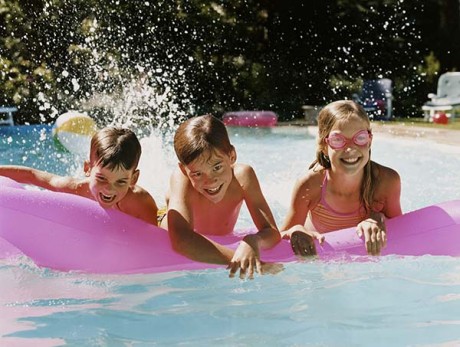Swimming in savings
More efficient pumps can cut pool operating costs
By Brian Sloboda
Swimming pools and hot tubs are fun toys that add to your electric bill. High electric bills are not inevitable, however. A number of relatively simple changes can cut operating costs by half or more.
At about $400 per year, the typical residential in-ground pool can account for one-quarter of a household’s annual utility bill. Hot tubs cost just a bit less to operate — about $300 per year. Electricity for above-ground pools runs about $100 per year.
Most pool energy goes to power the circulating pump, with much smaller amounts needed for cleaning and water treatment. In heated pools, energy use varies widely depending on climate and use patterns. The most common heat source is natural gas, followed by propane and electric resistance systems. Solar heating and electric heat pumps are gaining ground as high-efficiency options but are still not widely used.
Most pools rely on a single-speed, 1.5- to 2-hp pump that runs at full speed for eight hours a day or more. More efficient options include:
- Replace existing single-speed pump with high-efficiency single-speed pump. High-efficiency pumps use 8 percent to 10 percent less energy and are only marginally more expensive than standard pool pumps — about $10 to $20 above the normal pump cost of $350.
- Replace existing single-speed pump with two-speed pump. Two-speed pumps can run at two speeds and are more efficient because they don’t go “full throttle” all of the time. By running at a lower speed for 16 hours per day, you can save 60 percent to 70 percent on electric bills. A two-speed pump will cost an extra $100 to $150.
- Replace existing pump with variable-speed pump. The most efficient pumps can vary speed — and therefore electricity consumption — with the required workload. Although a variable speed pump will cost about $650 more than a basic pump, it saves the most energy by far — nearly 90 percent — and offers the greatest operational flexibility. Price and availability should improve over the next few years.
- Downsize pump. Most pools are designed with an unnecessarily large pump. Going from a 1.5-hp or 2-hp down to a 0.75-hp or 1-hp model can reduce pumping energy by half or more, often with no loss of performance.
In addition to replacing a pump, other measures to consider are:
- Use a bigger filter. An oversized filter will result in less pressure loss on the pumping system, enabling greater water flow with less energy. The larger filter will also last longer.
- Use bigger pipes (typically, 2 inches in diameter instead of 1.5 inches) and large-radius elbows. Making the flow path smoother and wider reduces pressure loss and pumping power.
- Control pump run time. Depending on your filtering system and amount of pool use, it may be possible to save a significant fraction of pumping energy just by running the pump less. The normal target is to cycle the pool’s volume through the filter one or two times per day. Try fewer hours and see if the pool still is acceptably clean. Although this no-cost measure is appealing, it will not save as much money and energy in the long run as replacing an inefficient pump with an efficient, two-speed or variable-speed pump.
Hot tubs
Above-ground hot tubs are packaged appliances and generally cannot be modified for energy efficiency. But you can try to minimize energy use by:
- Keeping the cover on.
- Reducing water temperature, especially if you won’t be using the tub for several days.
- Reducing the circulation pump run time, depending on use. Pump programmability varies with manufacturer
-
Share this story:
{ampz:Custom share for module}